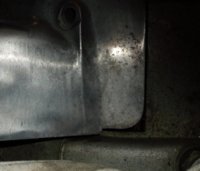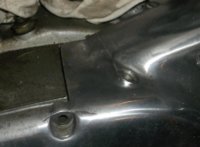There was a major change to the engine case and side cover where they meet in front of the chain guard area. The square edged one of off a 74, (second pic), and the round edge is of an 80, (first pic).
These jpeg pics from the biker.net fish files, show the part number for the cases on the
First pic has the TXA/XSB part no in brackets, It is the file for A/B/C and the second pic is from the D
The third pic is from the XS1/1b/2 and TX file.
XS1/1B has the left case no as ......256-15411-09-00
XS2/TX left case cover no as ........306-15411-04-00
Correction....Parts file have the 74/75,, (some have the 76 included as well), as the same part no. Seems to be wrong. 75B the cases and Side-cover changed
TX650A ..............306-15411-04-00.......
XS650C and later models was ........584-15411-00-00
The cases changed with the 72XS2 to the TX74XA then again from the 75B till the end of production, ...........
NOTE; Biker.net parts files. Seem to be wrong.
This is from various information from visual pics and Engine no's Since this thread/post was posted 5 years ago in 2013..........It is now 2018.
Updated thread about 75B left side engine side-cover
http://www.xs650.com/threads/oiler-hole-in-sprocket-side-case-cover.52932/#post-562376

 your right i didn't read the file properly.
your right i didn't read the file properly. 